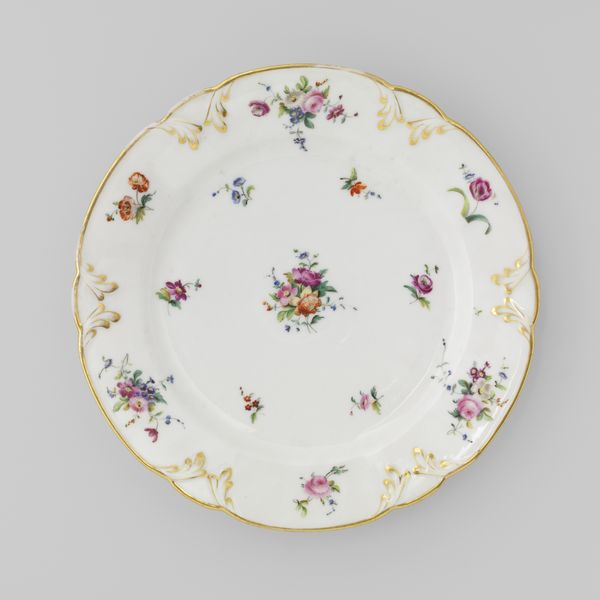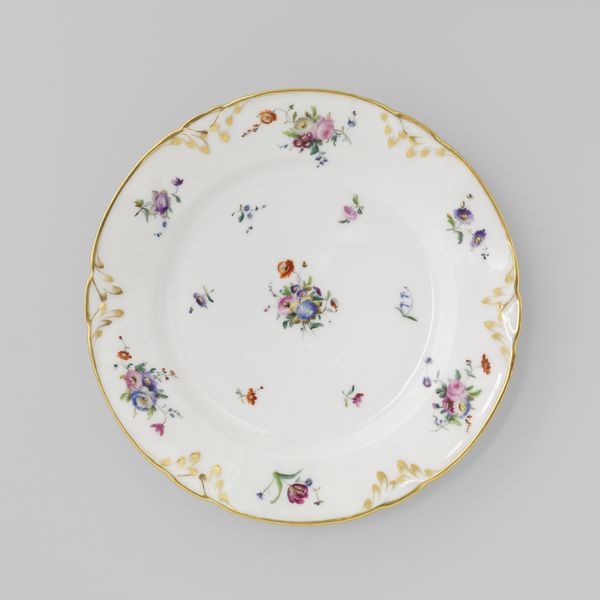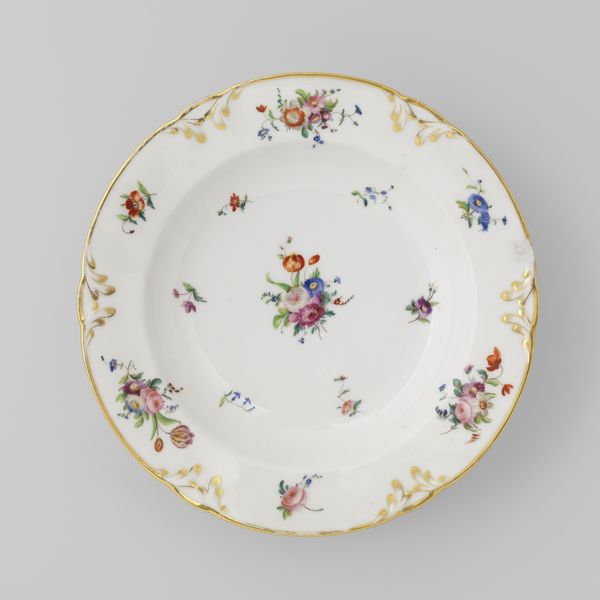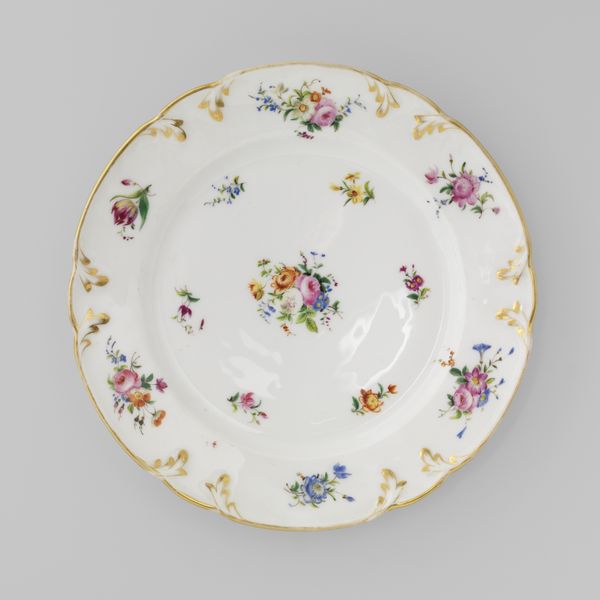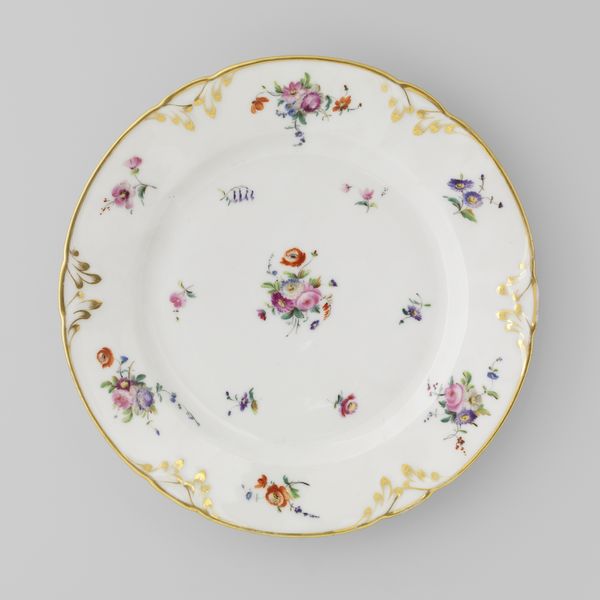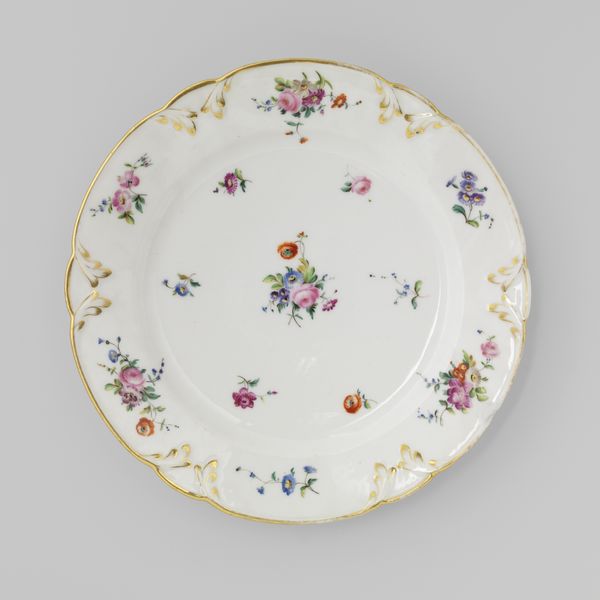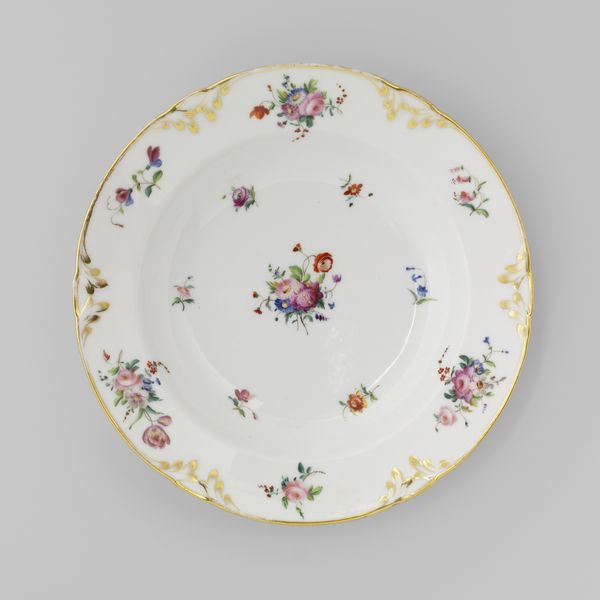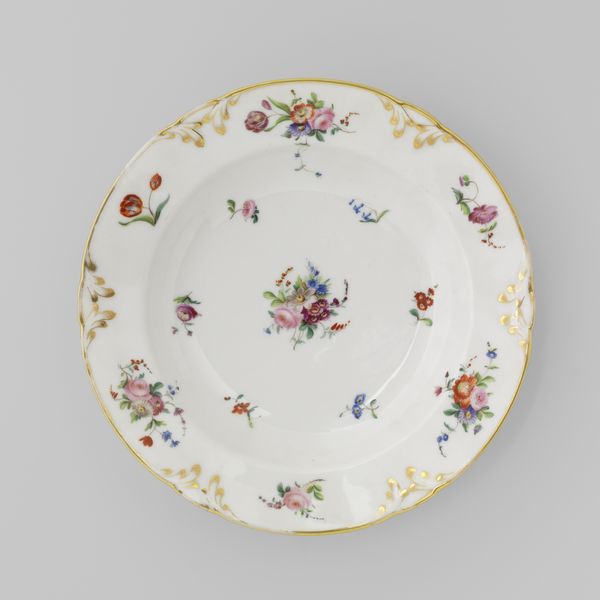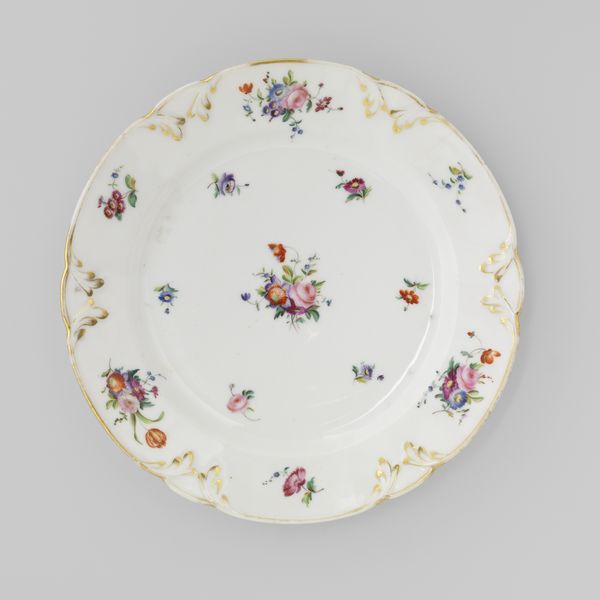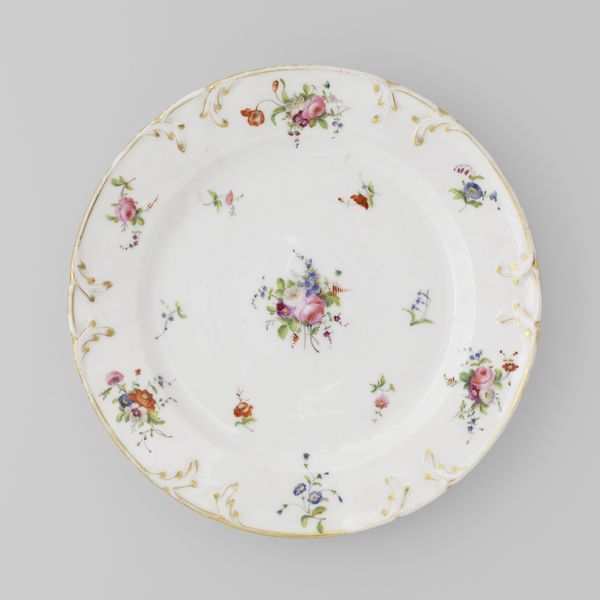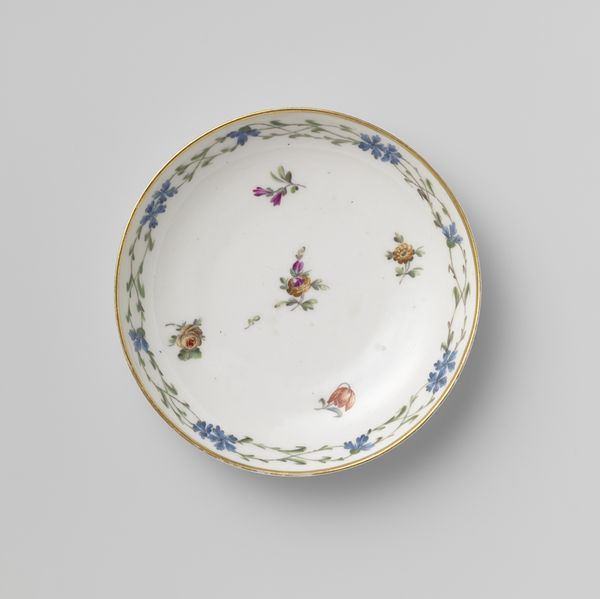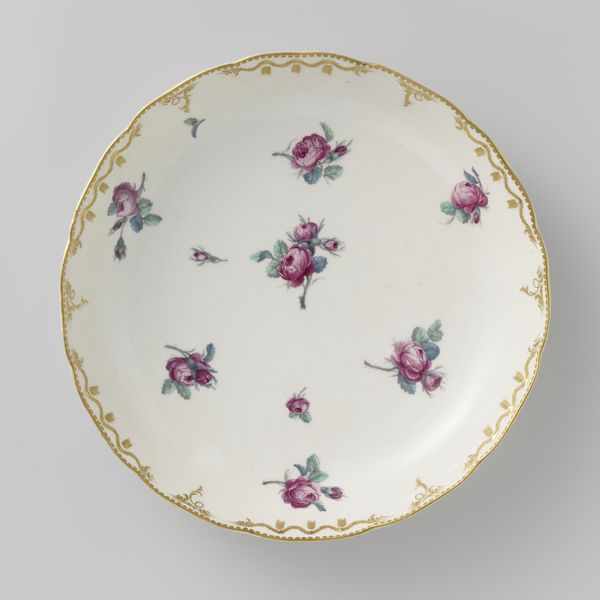
painting, porcelain
#
product photograph merchandise
#
product studio photography
#
circular oval feature
#
painting
#
product promotion photography
#
cake food
#
product fashion photography
#
porcelain
#
culinary art
#
food illustration
#
stoneware
#
romanticism
#
food photography
#
decorative-art
Dimensions: height 3 cm, diameter 24.6 cm, diameter 15.7 cm
Copyright: Rijks Museum: Open Domain
Editor: This is a porcelain plate, "Plate with bouquets and flower sprays," made around 1839 by Fabriek Dominique Denuelle, currently housed in the Rijksmuseum. The delicate floral patterns give it a very pretty, almost romantic feel. What stands out to you about this object? Curator: It's easy to see its beauty, but I immediately consider the socio-economic implications of owning such an item in the 1830s. Who commissioned it? Who used it, and on what occasions? Decorative objects like this weren't just for eating; they signaled status and refined taste within a strict social hierarchy. The careful arrangement of flowers, while seemingly simple, speaks volumes. Editor: Status, that’s a good point. Beyond status, does the type of imagery—these flowers—have particular meaning at the time? Curator: Absolutely. During this period, the language of flowers, or floriography, was highly fashionable. Specific blooms conveyed hidden messages of love, friendship, mourning... Do you notice how the bouquets are strategically placed around the perimeter and in the center? It’s carefully thought out to appeal to certain values of the era, such as order, refinement, and an appreciation of nature, albeit a controlled and idealized nature. It wasn’t just about aesthetics; it was a performance of social identity. Editor: So the choice and placement of flowers were almost like a code? What about the fact that it’s porcelain – does that impact your view? Curator: Porcelain, especially finely painted like this, further amplified its value. The meticulous craftsmanship signifies the owner’s appreciation for artistry and luxury goods, reinforcing their position within a consumer culture driven by elaborate display. This plate tells us a lot about the ritual and spectacle that governed upper-class social life. Editor: I see! Now, I appreciate the plate not only for its design, but for its role in broader social practices. Curator: Exactly. Looking at objects through the lens of their social history opens up a much deeper understanding of their place and meaning.
Comments
No comments
Be the first to comment and join the conversation on the ultimate creative platform.
